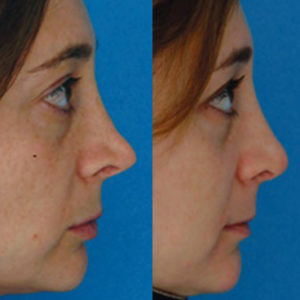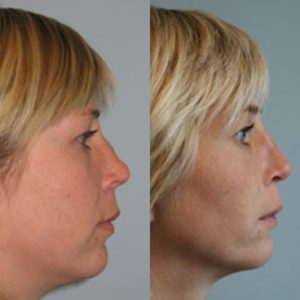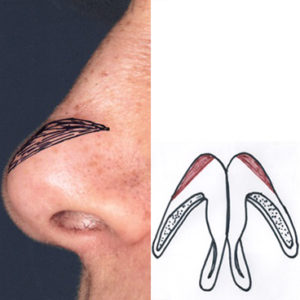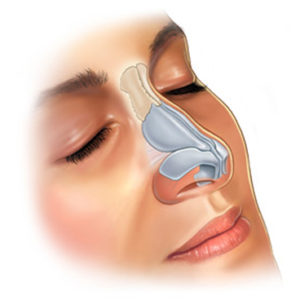Harvesting Ethmoid Bone The perpendicular plate of the ethmoid bone and/or the vomer may be used as a splinting graft in the treatment of a deviated cartilaginous septum. Ethmoid bone may be harvested via a standard septoplasty approach. Harvesting Conchal Cartilage: Anterior Approach Auricular cartilage can be harvested using the anterior or posterior approach (1-6)…. [Read More]
Rhinoplasty Fundamentals
Anatomy
Question: What’s so important about the anatomy of the nose? Answer: The anatomy of the nose is so important because it’s the main reason why your nose looks the way that it does. Because of that, it’s essential that the nose’s anatomy be accurately assessed, whether for a first-time rhinoplasty or a revision rhinoplasty procedure,… [Read More]
The Severely Twisted Nose
Chapter 1: Rhinoplasty Lecture – Twisted Nose Dr. Becker was a featured Guest Speaker at the 29th Annual Symposium in New York City, Advances in Aesthetic Plastic Surgery: The Cutting Edge 7. He was the invited speaker in this New York City Rhinoplasty Course. The lecture that he gave on the subject of “The Complex… [Read More]
Nose Form & Function
It is important that the rhinoplasty surgeon pay attention to both form and function. In other words, your nose should look great, but it also has to work! Dr. Becker is double board certified in ENT (Otolaryngology) and Facial Plastic Surgery. This means that his training and experience focus on both the aesthetic and functional… [Read More]
A Patient’s Guide
Chapter 1: Nose Reshaping: An OverviewChapter 2: Choosing a Cosmetic SurgeonChapter 3: Your ConsultationChapter 4: Preparing for Your Rhinoplasty SurgeryChapter 5: Your Rhinoplasty ProcedureChapter 6: After Your Rhinoplasty ProcedureChapter 7: Revision RhinoplastyIn Closing Patient’s Guide Appendix I owe a special thanks to my family for their love and support. I owe special thanks to my mentors, colleagues and friends: M. Eugene Tardy… [Read More]
Hybrid Rhinoplasty: Beyond the Dogmas of the 20th Century
Abstract The approach used by the founding fathers of rhinoplasty has incorrectly been called “closed” rhinoplasty. By implication, the term “closed” suggests that the surgeon cannot see or access vital areas of the nose during surgery. The term “endonasal” more accurately describes this particular approach. Until the 1980s, rhinoplasty was mainly thought of as surgical… [Read More]
My Personal Approach and Philosophy
Revision rhinoplasty is a term that encompasses a wide spectrum of problems, from straightforward to complex. In an established revision practice, patients seeking con- sultation include many who have all but lost hope. Commonly, the experienced revision surgeon will find that significant improvement is possible (Fig. 18–1). However, to achieve success, it is important that… [Read More]
Complications in Rhinoplasty
Abstract What holds true for every surgery is also essentially true of rhinoplasty. Knowledge about and awareness of complications and the possible means to handle them is essential for every rhinoplasty surgeon. Referring to the time of occurrence, complications can be divided into early and late complications. Early complications such as bleeding or infection are… [Read More]
Open Rhinoplasty
Abstract The tenets of rhinoplasty focus on restoring or maintaining the strength and support of the nasal skeleton while altering the contour to achieve the desired aesthetic result. The debate continues unabated over the advantages and disadvantages of an open versus a closed endonasal approach. The open technique offers the obvious benefit of direct observation,… [Read More]
The Endonasal Approach: Overview and Personal Philosophy
Abstract Endonasal rhinoplasty has long been considered a reductive operation. With the advent of cartilage grafting and support and better understanding of nasal dynamics, endonasal rhinoplasty can be performed in a predictable manner. The advantages of shorter operative time, less prolonged postoperative swelling, and less postoperative skin contracture have allowed endonasal rhinoplasty to continue to… [Read More]






